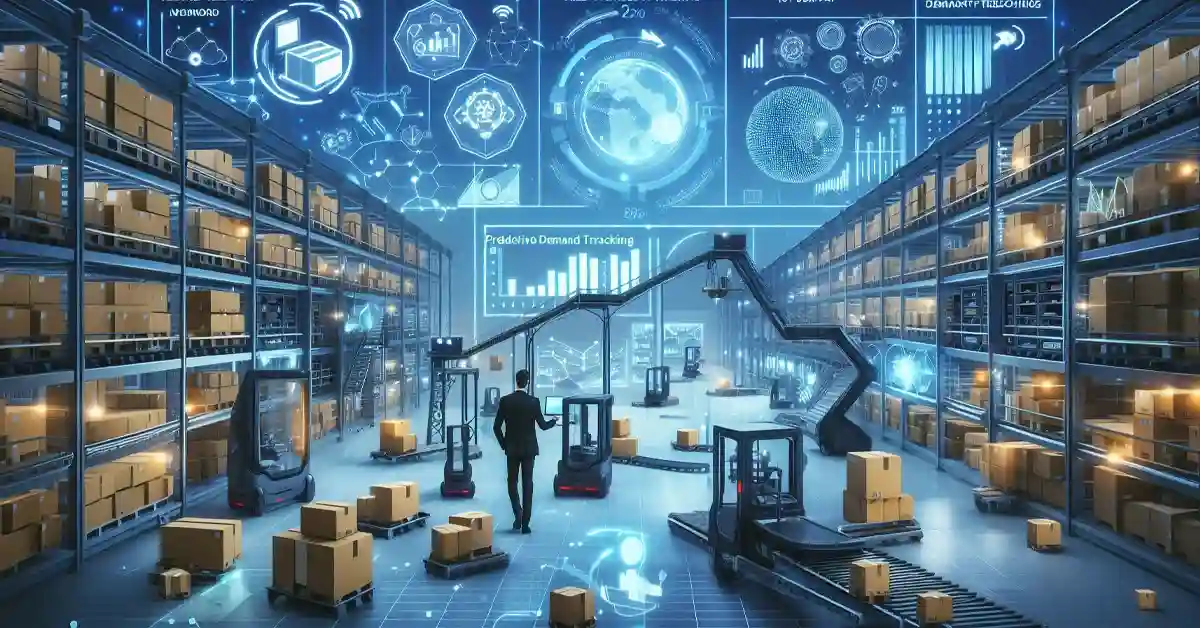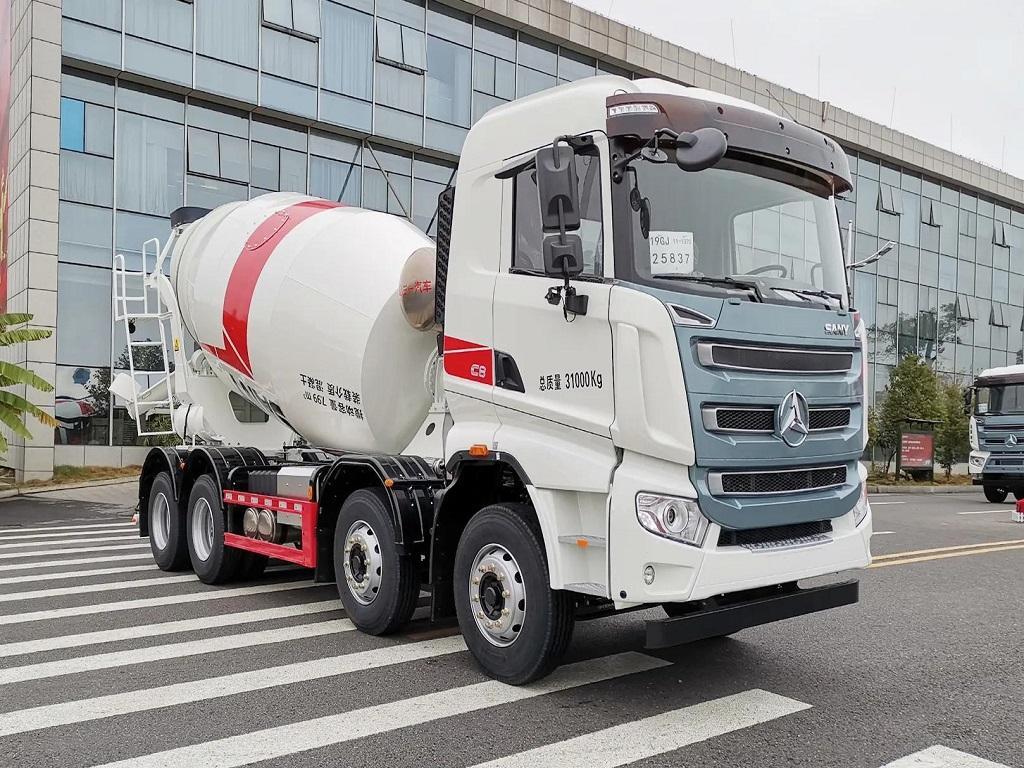In today’s fast-paced world, the distribution of goods plays a vital role in ensuring that products reach consumers efficiently and on time. With the rise of e-commerce and the global economy’s expansion, the need for innovative solutions in supply chain management has never been greater. Advancements in technology offer a myriad of opportunities to improve the distribution process, making it more streamlined, cost-effective, and reliable.
Do you ever wonder how technology can improve the distribution of goods? This blog post explores the latest trends in e-commerce technology, retail distribution, and supply chain innovation. By the end, you’ll have a comprehensive understanding of how these advancements can benefit your business and why they are essential in today’s competitive market.
From automating warehouse operations to utilizing data analytics for predictive demand forecasting, technology is reshaping the landscape of goods distribution. Here, we’ll uncover key ways technological innovations can revolutionize your supply chain processes, enhance customer satisfaction, and ultimately drive your business’s success. Ready to learn more? Read on!
Technological Automations in Warehousing
Automation in warehousing is one of the most significant advancements in the distribution of goods. Automated systems such as conveyor belts, robotic picking systems, and automated guided vehicles (AGVs) streamline operations by reducing manual labor and increasing efficiency.
For instance, Amazon’s fulfillment centers use robots to move goods within the warehouse, significantly speeding up the order processing time. This leads to faster shipping times and lower labor costs. Implementing automation not only reduces human error but also optimizes space utilization, allowing businesses to store more products in less space.
Additionally, automation enhances safety in the warehouse environment by taking over dangerous tasks that could lead to injuries. This includes lifting heavy items or operating machinery that requires precision. Overall, automating warehousing processes leads to a more efficient, cost-effective, and safer distribution network.
Real-Time Inventory Tracking
Real-time inventory tracking is another game-changer in the distribution of goods. Advanced inventory management systems use RFID tags and IoT devices to provide real-time updates on the location and status of products. This technology allows businesses to monitor inventory levels accurately and avoid stockouts or overstock situations.
For example, when a product is sold, the inventory system automatically updates the stock levels and triggers reordering if the item is running low. This ensures that popular products are always available for customers, improving their shopping experience and boosting sales.
Furthermore, real-time inventory tracking helps in identifying trends and patterns in consumer behavior. By analyzing this data, businesses can make informed decisions about product demand, stocking strategies, and marketing efforts. This leads to a more responsive and customer-centric distribution approach.
Predictive Demand Forecasting
Predictive demand forecasting leverages big data and machine learning algorithms to anticipate future product demand. By analyzing historical sales data, market trends, and external factors such as seasonality and economic conditions, predictive analytics provides accurate forecasts that help businesses plan their inventory and distribution strategies more effectively.
For instance, a retailer can use predictive demand forecasting to determine which products will be in high demand during the holiday season. This allows them to stock up on these items in advance, ensuring they can meet customer demand without facing stockouts.
Predictive forecasting also helps in optimizing supply chain operations by aligning production schedules with anticipated demand. This reduces the risk of overproduction and minimizes wastage, leading to cost savings and improved sustainability.
Enhanced Customer Experience with Last-Mile Delivery
Last-mile delivery is the final step in the distribution process, where goods are delivered from a transportation hub to the end customer. Technology has significantly improved last-mile delivery by providing various options such as same-day delivery, contactless delivery, and real-time tracking.
Companies like FedEx and UPS use route optimization software to plan the most efficient delivery routes, reducing delivery times and fuel costs. Additionally, GPS tracking allows customers to monitor their delivery in real-time, providing transparency and enhancing their overall experience.
Innovations such as drone deliveries and autonomous delivery vehicles are also on the horizon, promising even faster and more efficient last-mile delivery solutions. These advancements ensure that goods reach customers quickly and reliably, boosting customer satisfaction and loyalty.
Streamlined Communication with Supply Chain Partners
Effective communication is crucial for a smooth supply chain operation. Technology facilitates seamless communication between supply chain partners, including suppliers, manufacturers, distributors, and retailers.
Cloud-based collaboration platforms allow stakeholders to share information, updates, and documents in real-time. This ensures that everyone is on the same page and can respond quickly to any issues or changes in the supply chain.
For example, if a supplier faces a delay in delivering raw materials, they can instantly notify the manufacturer through the collaboration platform. This allows the manufacturer to adjust production schedules accordingly, minimizing disruptions in the supply chain.
Streamlined communication also enhances transparency and trust among supply chain partners, leading to stronger relationships and more efficient operations.
Sustainable Practices with Green Logistics
Sustainability is becoming increasingly important in the distribution of goods. Green logistics involves using eco-friendly practices and technologies to reduce the environmental impact of supply chain operations.
Electric vehicles (EVs) are gaining popularity for transportation and delivery, as they produce zero emissions compared to traditional fuel-powered vehicles. Companies like DHL and UPS are investing in EVs to make their logistics operations more sustainable.
Additionally, optimizing delivery routes and consolidating shipments reduce fuel consumption and carbon emissions. Warehouse management systems that promote energy-efficient practices, such as using LED lighting and solar panels, also contribute to greener logistics.
Implementing sustainable practices not only benefits the environment but also enhances a company’s reputation and attracts environmentally-conscious customers.
Leveraging Data Analytics for Supply Chain Optimization
Data analytics plays a pivotal role in optimizing supply chain operations. By collecting and analyzing vast amounts of data, businesses can gain valuable insights into their supply chain performance and identify areas for improvement.
For instance, data analytics can help identify bottlenecks in the distribution process, such as delays in transportation or inefficiencies in warehouse operations. By addressing these issues, businesses can streamline their supply chain and improve overall efficiency.
Predictive analytics also aid in risk management by identifying potential disruptions in the supply chain, such as natural disasters or supplier bankruptcies. This allows businesses to develop contingency plans and ensure continuity in their operations.
Overall, leveraging data analytics empowers businesses to make data-driven decisions, optimize their supply chain, and stay competitive in the market.
Integration of AI and Machine Learning
Artificial intelligence (AI) and machine learning (ML) are revolutionizing the distribution of goods by automating complex tasks and providing advanced insights. AI-powered systems can analyze vast amounts of data and make real-time decisions to optimize supply chain operations.
For example, AI algorithms can predict demand fluctuations and adjust inventory levels accordingly. ML models can optimize delivery routes based on traffic patterns and weather conditions, ensuring timely and efficient deliveries.
AI-powered chatbots enhance customer service by providing instant responses to queries and resolving issues. This improves customer satisfaction and reduces the workload on human agents.
The integration of AI and ML in supply chain management leads to smarter, more efficient, and agile operations, enabling businesses to stay ahead in a competitive market.
Blockchain Technology for Transparency and Security
Blockchain technology offers a decentralized and transparent way to track goods throughout the supply chain. Each transaction is recorded on a secure and immutable ledger, providing complete visibility and traceability of products.
This technology is particularly beneficial for industries such as pharmaceuticals and food, where product authenticity and safety are paramount. Blockchain ensures that products are sourced ethically and meet regulatory standards, reducing the risk of counterfeiting and fraud.
For example, Walmart uses blockchain to trace the origin of fresh produce, ensuring food safety and quality. Customers can scan QR codes on products to access detailed information about their journey from farm to store.
Blockchain also enhances security by preventing unauthorized access and tampering with supply chain data. This builds trust among supply chain partners and customers, ensuring the integrity of products and operations.
Benefits of Cloud-Based Supply Chain Platforms
Cloud-based supply chain platforms provide a centralized and scalable solution for managing supply chain operations. These platforms offer real-time visibility, collaboration, and analytics, enabling businesses to make informed decisions and respond quickly to changes.
For instance, cloud-based platforms like Oracle SCM Cloud and SAP Integrated Business Planning (IBP) allow businesses to monitor inventory levels, track shipments, and manage orders in real-time. This improves efficiency and reduces the risk of stockouts or delays.
Cloud-based platforms also facilitate collaboration among supply chain partners by providing a single source of truth. Stakeholders can access and share information seamlessly, ensuring transparency and alignment across the supply chain.
Additionally, cloud-based platforms are scalable and cost-effective, allowing businesses to adapt to changing demands and grow without significant infrastructure investments.
The Future of Autonomous Vehicles in Distribution
Autonomous vehicles (AVs) are poised to revolutionize the distribution of goods by offering faster, safer, and more efficient transportation solutions. Self-driving trucks and delivery robots are being developed and tested by companies like Tesla, Waymo, and Amazon.
AVs can operate 24/7, reducing delivery times and increasing productivity. They also minimize the risk of human error, leading to safer transportation and fewer accidents.
For example, self-driving trucks can transport goods over long distances without the need for rest breaks, ensuring timely deliveries. Delivery robots can navigate urban environments to deliver packages directly to customers’ doorsteps, enhancing the last-mile delivery experience.
The integration of AVs in distribution networks promises to reshape the logistics industry, offering significant benefits in terms of efficiency, cost savings, and customer satisfaction.
Conclusion
Technology is transforming the distribution of goods, offering innovative solutions that enhance efficiency, transparency, and customer satisfaction. From automating warehouse operations to leveraging data analytics and AI, businesses can optimize their supply chain and stay competitive in the market.
By adopting these technological advancements, e-commerce businesses, retailers, and supply chain managers can improve their operations, reduce costs, and deliver exceptional customer experiences. The future of distribution lies in harnessing the power of technology to create smarter, more agile, and sustainable supply chains.
Ready to revolutionize your supply chain? Explore the latest e-commerce technology and supply chain innovations today to stay ahead in the competitive market.










